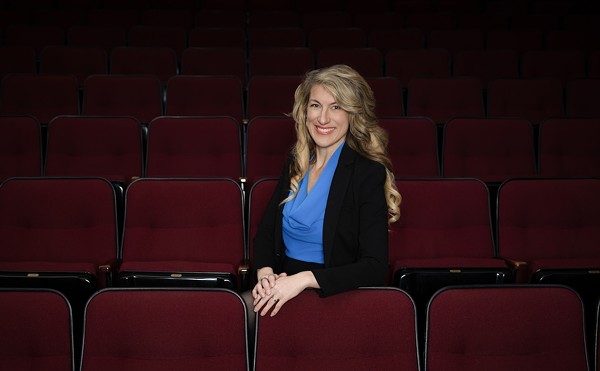The compact, fast-moving evening is made up of more than 30 theater songs by Stephen Sondheim, written between 1956 (West Side Story) and 1973 (A Little Night Music). Among the many high points, Leslie Denniston (as radiant today as when she appeared in St. Louis 22 years ago in the pre-Broadway tryout of the Charles Dickens musical Copperfield) does delightful battle with Sondheim's most challenging tongue twister, "Getting Married Today" from Company. Barbara Walsh finds just the right edge for the little-known "We're Gonna Be All Right" from Do I Hear a Waltz?
Karen Morrow offers master classes of two songs from Follies. In "Broadway Baby" she resists the temptation to bite into that hard consonant "B" sound and instead elongates "baby" so smoothly that she resembles a ventriloquist playing a slide trombone. For "I'm Still Here," rather than merely belting out a showstopper, she succeeds in unspooling a story that is both wry and stirring. Morrow is an audience favorite, but really, she should be directing, for she understands that capacious stage better than anyone currently associated with the Muny -- including director Paul Blake.
Side by Side succeeds despite Blake's best efforts to warp the revue.
There are witless additions to the script and mundane intrusions on the songs. His excruciatingly strained staging of "You Gotta Have a Gimmick" from Gypsy is a textbook example of how not to "improve" Sondheim. And once again Blake insists on cluttering the stage with unnecessary bodies. A revue that was conceived for three performers and a narrator now has a cast of eleven. To what purpose? Because an intimate revue is being mounted on a big stage? After thirteen seasons as executive producer, Blake should have learned by now that the Muny is not about body counts; it's about star presence. Karen Morrow alone onstage can hold that vast audience in the palm of her hand. She doesn't need an ensemble, thank you anyway.
If the men (Lewis Cleale, Joel Higgins and the personable Michael McGrath) don't fare as well as the women, remember that they didn't cast themselves. According to the program biographies, not a single one of the six principals has appeared in a major Sondheim production. But this is tricky stuff. It's no surprise that too often on opening night these performers were reaching for lyrics. Why didn't Blake cast a few singers with prior Sondheim experience? Instead, in what appears to be couch potato casting of the laziest sort, he has taken the easy way out and relied on the usual suspects.
So it is that the real star of the evening is Sondheim himself. Listen to the soaring, piercing beauty of "Pretty Lady" from Pacific Overtures or the wistful title song from Anyone Can Whistle. Listen for the evocation of mood through music -- the cacophony of big-city life that underscores every song from Company. And watch musical director Kevin Farrell, whose passion for Sondheim occasionally propels the onstage Muny orchestra to glorious heights.
So many haunting songs from so many classic musicals. The sad irony is that Company, A Little Night Music, Sweeney Todd -- even Into the Woods (Sondheim's irreverent take on fairy tales) -- are taboo at the Muny. This decades-long-overdue pastiche of musical appetizers is hardly brave theater fare, but it's a lot better than the benign neglect to which America's greatest living theater composer-lyricist is usually accorded by the Muny. So take note: Support Sondheim now, or forever hold your peace. In Forest Park anyway.





